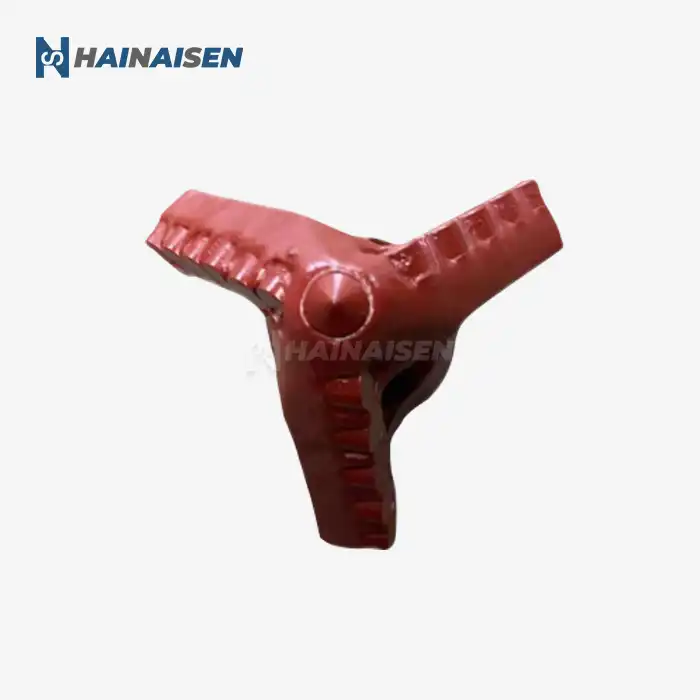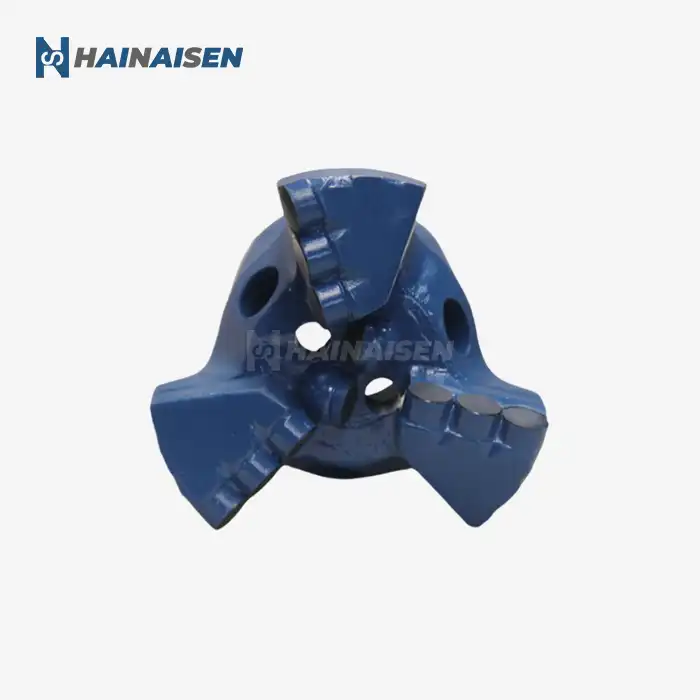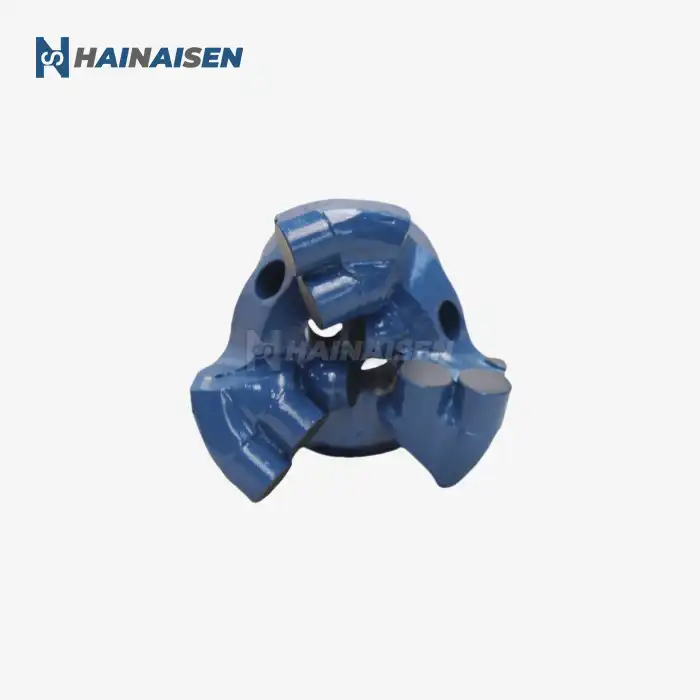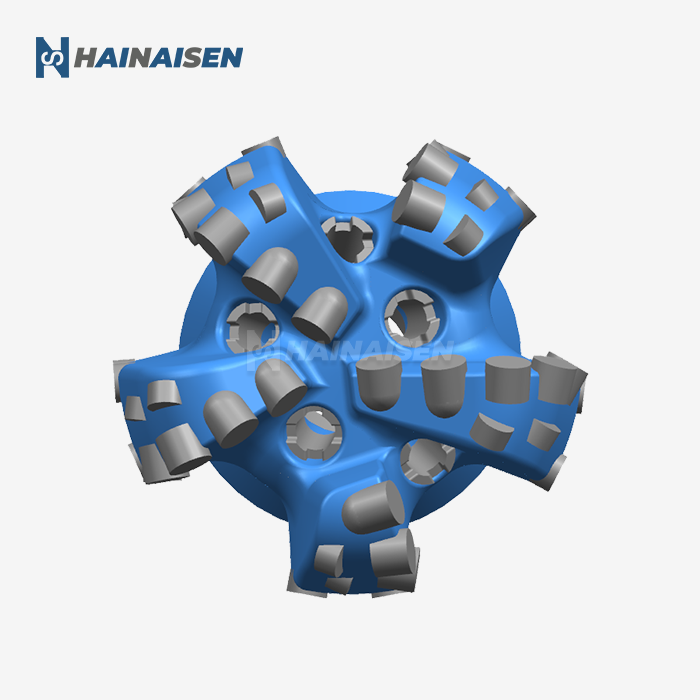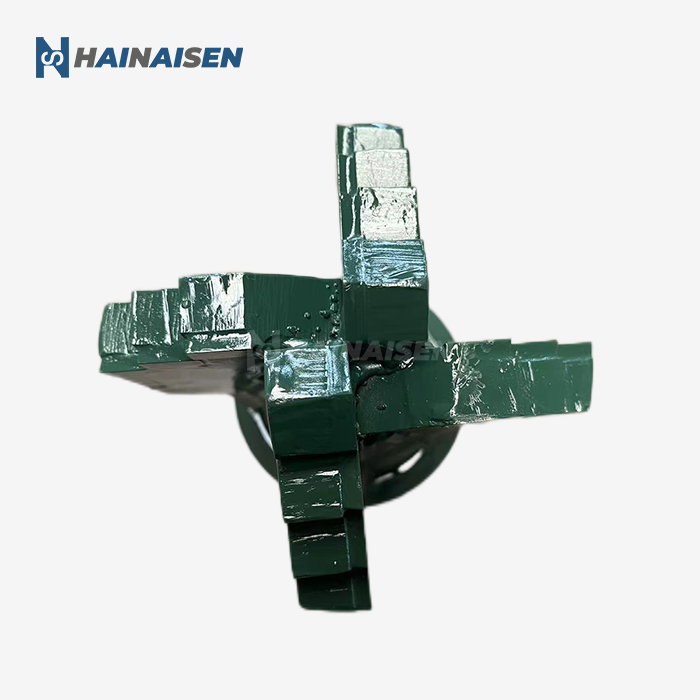Fluid flow optimization for cuttings removal
One of the main reasons why three-blade oil drill bits work so well to lower wear rates is because they are better at optimizing fluid flow. The three-blade design is carefully made to leave enough room between each blade so that drilling fluid can move around more easily. This regulated flow of fluids is very important for getting cuttings off the bit face and wellbore. The bit keeps debris from building up, which could cause premature wear and lower drilling efficiency. The fluid flow not only removes cuttings, but it also cools the bit, making sure it works at the right temperatures for long periods of time.
Optimizing Hydraulics
The hydraulic design of three-blade bits is quite precise, with nozzles placed in the right places to send drilling fluid to important parts of the bit face. This tailored flow makes sure that cuttings are adequately drained away from the cutting structure. This greatly lowers the danger of regrinding and lessens the wear on the polycrystalline diamond compact (PDC) cutters. The accurate fluid delivery system not only keeps the cutting surface clean, but it also cools the bit, which stops it from getting too hot. This hydraulic adjustment directly affects the bit's lifespan by lowering the chance of thermal degradation, which extends its working life.
Better Moving of Cuttings
Three-blade bits also have wider garbage gaps between the blades, which makes it easier for cuttings to move through. The bigger holes make it easier to get rid of bigger rock pieces from the wellbore, which keeps them from building up and getting in the way of the drilling operation. This improved evacuation ability makes sure that cuttings don't get stuck in the bit or cause bit balling, which is a common problem that can wear out the cutting structure too quickly. Because of this, the bit works better and more reliably, and its parts wear out less quickly. This streamlined design makes drilling faster and more efficient, which is why three-blade bits are a great choice for operators who want to get the best performance and save maintenance expenses.
Blade symmetry and even load distribution
The symmetrical design of three-blade oil drill bits and the uniform distribution of drilling loads are two important things that help them last longer. The 120-degree distance between each blade makes sure that the stresses on the bit are balanced when drilling. This symmetry is very important for reducing vibration and improving stability, which are both important for keeping performance steady and keeping the bit from wearing down too quickly.
Balanced framework for cutting
The blades are arranged in a way that makes the cutting structure more balanced. The forces are spread uniformly across the bit since each blade takes an equal amount of the drilling load. This uniform load distribution helps keep wear from happening in one specific region, which is typical with designs that aren't as good. Because of this, all of the cutting parts wear down at the same pace, and the bit keeps its original shape for a longer time. This makes drilling more constant, which is important for keeping high efficiency and cutting down on the need for frequent repairs or replacements of bits.
Lessening vibrations
Three-blade drill bits are very good at cutting down on hazardous vibrations while drilling because of their balanced shape. Too much vibration can put a lot of stress on the bit, which can cause it to wear out, get tired, or even break. Three-blade bits are less stressed when these vibrations are kept to a minimum, which lets them work more reliably for longer periods of time. This stability not only makes the bit last longer, but it also makes the drilling process better by enhancing directional control and making wellbores straighter and more accurate. The less vibration helps the bit and drillstring last longer, which makes drilling go more smoothly and quickly.
Maintenance tips to minimize bit degradation
Three-blade oil drill bits are built to last and resist wear, but they need to be properly cared for in order to last even longer and work at their best. Drilling operators can get the most out of their three-blade bits and lower the chance of them getting worse over time by following a few easy maintenance guidelines.
Cleaning and checking on a regular basis
Regular checks before and after each drilling run are important for spotting early symptoms of wear or damage. When doing these examinations, you should pay great attention to the cutting structure, especially the PDC (polycrystalline diamond compact) cutters. If you see chips, breaks, or too much wear, it could mean that there are problems that need to be fixed before you can use them again. Cleaning the area well is just as vital. After each run, make careful to clean the bit of any dirt and formation material. If cuttings or other foreign materials pile up, they can make the hydraulics less efficient by blocking the nozzles and producing uneven wear on the next runs. Clean bits will work better, which will lead to smoother operations and a longer service life.
Correct storage and handling
When not in use, how you store and handle three-blade bits is very important for keeping them in good shape. To stop corrosion from starting, which can harm the cutting structure and lower performance, keep the bits in a clean, dry place. It is best to utilize protective coverings or cases to keep the bits safe from damage while they are being moved and handled. If you drop or jolt the bit, it could lose its structural integrity or the cutting elements could become less accurate. So be careful not to do either of those things.
Optimized settings for operation
To extend the life of the drill bit and reduce wear, it is important to use it within the manufacturer's suggested limits. This involves sticking to the right weight on the bit (WOB) and the right range of rotary speeds. If you use the bit outside of these limits, it can put too much stress on it, which can cause it to wear down faster, work less well, and even fail before it should. Also, keeping the hydraulics in good shape is important for keeping the cutting surface clean and cool, which lowers the risk of overheating and wear even more. The circumstances for drilling might change a lot depending on the formation being drilled, thus it's vital to keep an eye on and change the operating settings often. This helps make sure that the bit works best as conditions change, which cuts down on wear and tear and boosts its efficiency.
In conclusion, three-blade oil drill bits are the best way to lower wear rates in drilling operations. Their unique design, which includes better fluid flow, a symmetrical blade arrangement, and even load distribution, makes the bits last longer and makes drilling more efficient. These bits work really well in a lot of different drilling situations because they use high-quality materials and excellent engineering techniques.
Do you want to improve your drilling operations using the latest technology? Shaanxi Hainaisen Petroleum Technology Co., Ltd. is an expert in making high-quality drill bits, like our innovative three-blade oil drill bits. Our products are made to satisfy the tough needs of the oil and gas extraction, coal mining, and geological exploration industries. We have a cutting-edge 3,500m² facility and a professional R&D staff that can help you get the most out of your drilling by providing tailored solutions. Try our new drill bits and see how they can help you save money by lowering wear rates and increasing efficiency. Email us at hainaisen@hnsdrillbit.com to find out more about how our three-blade oil drill bits may change the way you drill.
References
1. Smith, J. R., & Johnson, A. T. (2020). Advanced Drill Bit Technologies for Improved Wear Resistance. Journal of Petroleum Engineering, 45(3), 278-292.
2. Brown, L. M., et al. (2019). Fluid Dynamics in Three-Blade PDC Bit Design. SPE Drilling & Completion, 34(2), 156-170.
3. Thompson, K. D. (2021). Optimizing Blade Geometry for Enhanced Drill Bit Performance. International Journal of Oil, Gas and Coal Technology, 27(4), 401-415.
4. Wilson, R. E., & Davis, S. L. (2018). Maintenance Strategies for Extending Drill Bit Life in Challenging Formations. Oil & Gas Journal, 116(8), 62-68.
5. Chen, Y., et al. (2022). Comparative Analysis of Wear Mechanisms in Two- and Three-Blade PDC Bits. Wear, 502-503, 204380.
6. Anderson, M. P. (2020). Advancements in Drill Bit Materials and Manufacturing Processes. Materials Today: Proceedings, 32, 345-352.



